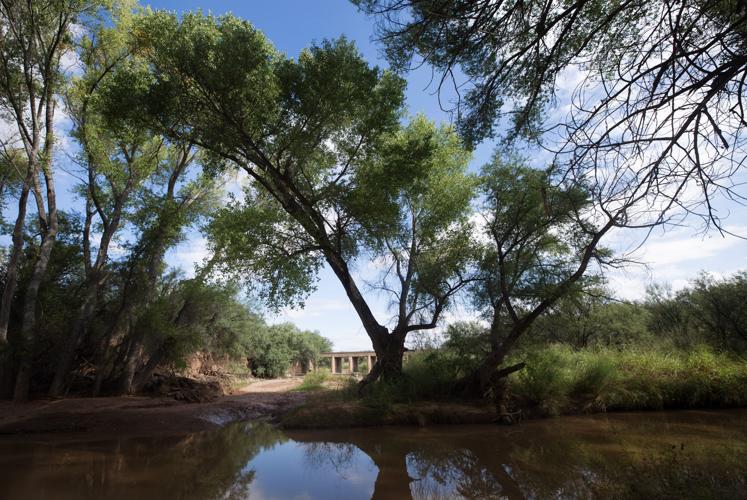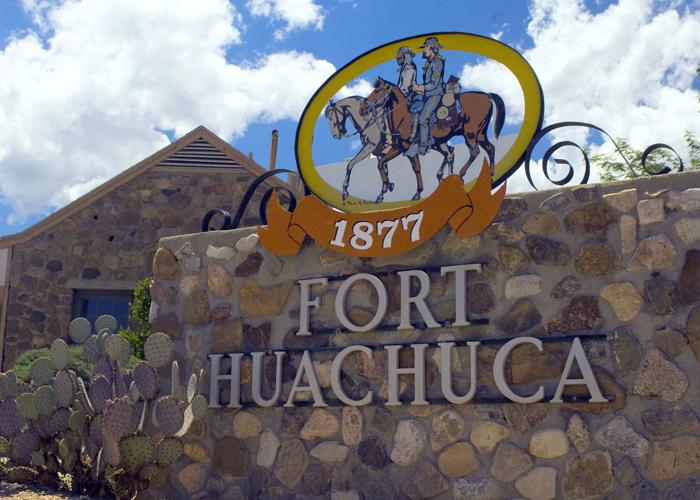Fort Huachuca and environmentalists are willing to hold rare negotiations to avoid another lawsuit, potentially pitting the preservation of Army jobs against the San Pedro River.
The fort is offering to negotiate over its groundwater pumping. And the Tucson-based Center for Biological Diversity, known for suing rather than negotiating, says OK — but only if the fort considers downsizing.
Army officials won’t say whether they’ll meet that condition, which could cost jobs at the Sierra Vista fort, one of Southern Arizona’s largest employers with more than 11,000 jobs.
But they are rebutting the environmentalists’ allegations that the fort’s groundwater pumping threatens survival of the San Pedro, the Southwest’s last free-flowing desert river.
The offer to discuss San Pedro issues was first extended by Fort Garrison commander Chad Rambo in a letter last week to Center for Biological Diversity activist and board member Robin Silver.
Rambo’s letter also denounced as “patently false” Silver’s allegation that the fort tried to cover up a critical internal report saying the fort’s pumping is already drying up sections of a major tributary to the river.
He wrote that contrary to environmentalist concerns, the fort is actually in a state of groundwater “surplus.”
Rambo was responding to a notice the center and two other environmental groups filed in December that they intend to sue the fort and the U.S. Fish and Wildlife Service. The suit would seek to overturn a 2014 biological opinion by the wildlife service that cleared the fort to continue operating at full force. Joining in the notice were the Sierra Club’s Grand Canyon Chapter and the Maricopa Audubon Society.
Silver doubled down on his allegations in a written response this week to Rambo. But he also emailed an Army attorney asking about potential negotiations.
For the center to be willing to negotiate is a “fairly significant switch” in its strategy, said Robert Glennon, a University of Arizona law professor whose book “Water Follies” contains a chapter on the San Pedro.
“The strategy of the center has usually been to litigate, litigate, litigate,” Glennon said. While many other adversaries in environmental issues can develop cordial relationships through communications, “the center is known for not caring about what the other side thinks of them.”
Typically, the center sues government agencies first over environmental issues, particularly the Endangered Species Act, and sometimes later negotiates a settlement.
A meeting between Fort Huachuca and the center also would be the first since 2004 in their longstanding conflict over the San Pedro. Before and since, they have fought repeatedly in court, with the center winning several suits to gain rewrites of earlier biological opinions.
“The Army would like to avoid unnecessary litigation,” Rambo wrote to Silver on Jan. 30 in response to the notice of intent to sue.
Because the fort will start work toward a new biological opinion sometime after October 2020, litigation serves little purpose now, he wrote.
Silver said a good reason for negotiating now is that, “We’ve won eight cases before against the fort and we’re going to win again. It behooves both sides to come out with something other than another legal order.”
But Silver said he has two conditions for negotiating. First, that Army decision-makers, not just lawyers, be present, and second, that downsizing of the fort be discussed.
He said curtailing fort operations is the only way to stop the chronic deficit of more water being pumped out than recharged into the aquifer. That’s because Sierra Vista, Cochise County and other government entities haven’t ended that imbalance, Silver said.
“There’s no more wiggle room for the San Pedro. The consensus of hydrologists is that the San Pedro has a very limited lifespan given current pumping,” Silver said.
Mark Holycross, the Army’s litigation counsel, and Fort Huachuca spokeswoman Angela Camara declined comment on Silver’s conditions. They said they can’t discuss potential, pending or ongoing litigation.
The environmental groups could have filed suit any time starting Feb. 3, 60 days after giving notice.
A key point in the intent-to-sue notice was a November 2010 report, written for the fort by Tucson private consultant GeoSystems Inc., and stamped “confidential.” Silver released it to the public in December, saying it was leaked to him by a source he declined to disclose.
It concluded that the fort’s pumping has and will continue to dry up stretches of a major San Pedro tributary, the Babocomari River, and will dry up a section of the San Pedro by 2050. The various stretches each run more than two football fields long.
Silver has accused the fort of deliberately withholding these findings from the wildlife service. The report was mentioned in the 2014 biological opinion but the specific critical details weren’t discussed. A wildlife service official wrote to Silver in October 2019 that it doesn’t have the report.
Rambo’s response said the GeoSystems report was “quoted, cited, and referenced” several times in the Army’s separate 2013 biological assessment on the fort’s impacts. The wildlife service discussed it in five pages of its 2014 biological opinion, Rambo wrote.
The 2010 report’s final draft was also provided for the Army’s administrative record of all documents relevant to this case, he wrote.
In his written reply, Silver countered that Fort Huachuca provided the wildlife service with only “selective” quotations from the report that didn’t reveal its damaging findings.
Rambo acknowledged environmentalists’ point in their legal notice that the amount of groundwater recharge achieved by several stormwater capture projects built along the river has been less than expected.
But other water mitigation projects approved before and after publication of the 2014 biological opinion have more than made up for the recharge gap, resulting in a “large, positive, net groundwater surplus,” Rambo wrote.
Finally, because the fort’s workforce has declined since 2014, and groundwater pumping resulting from its presence hasn’t increased significantly, “there has been no significant change” in the amount of water that the fort uses and that is used off post but is attributable to the fort, he wrote.
“Fort Huachuca continues to be a leader in water conservation, reuse and recharge, and provides a benefit to the San Pedro River and species that rely on it,” Rambo wrote.
Silver disputed the fort’s groundwater surplus calculation. It’s based in part on “speculative” efforts to avoid future water use and on taking credit now for savings achieved long ago, he said.
Silver also said groundwater pumping attributable to the fort’s operations, workforce and contractors will increase 61% in the future, due to the upcoming 7,000-home Pueblo del Sol development in Sierra Vista.





